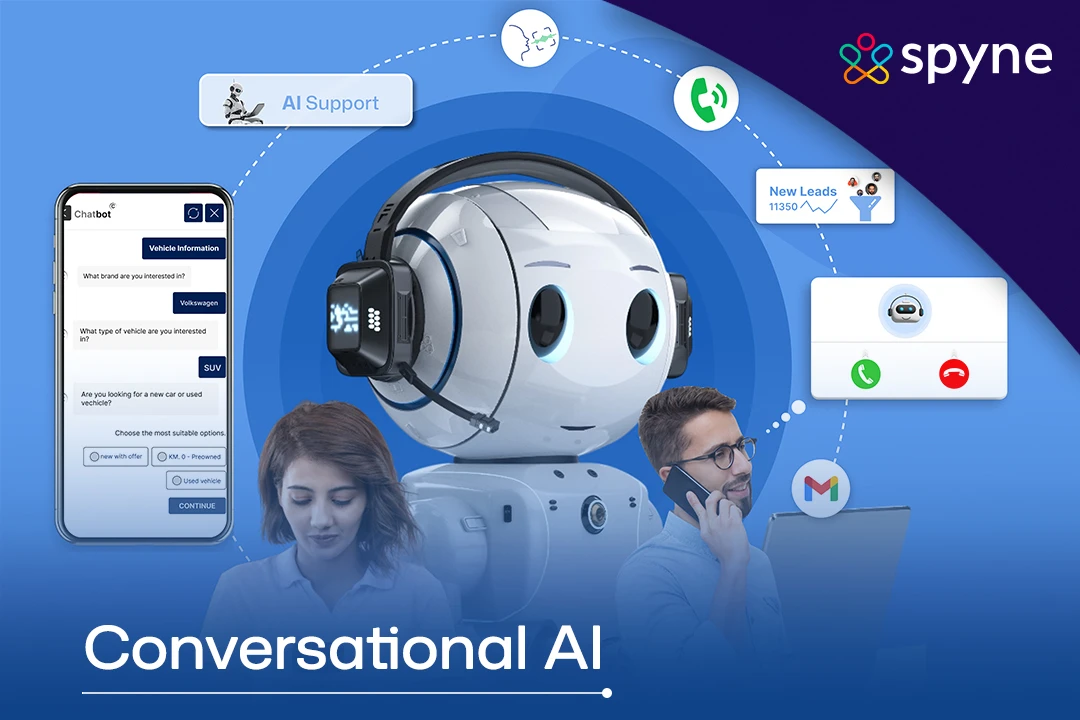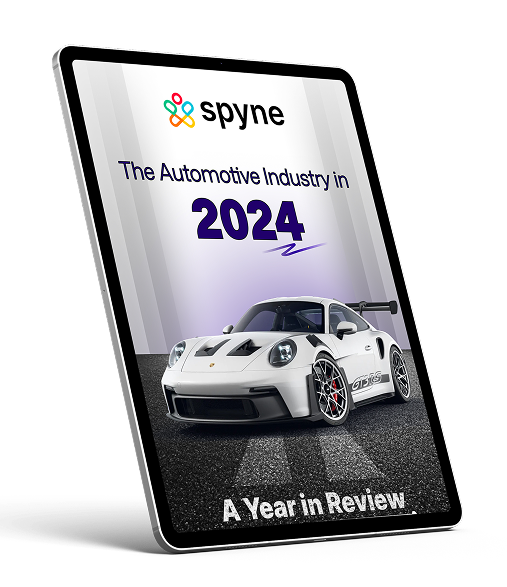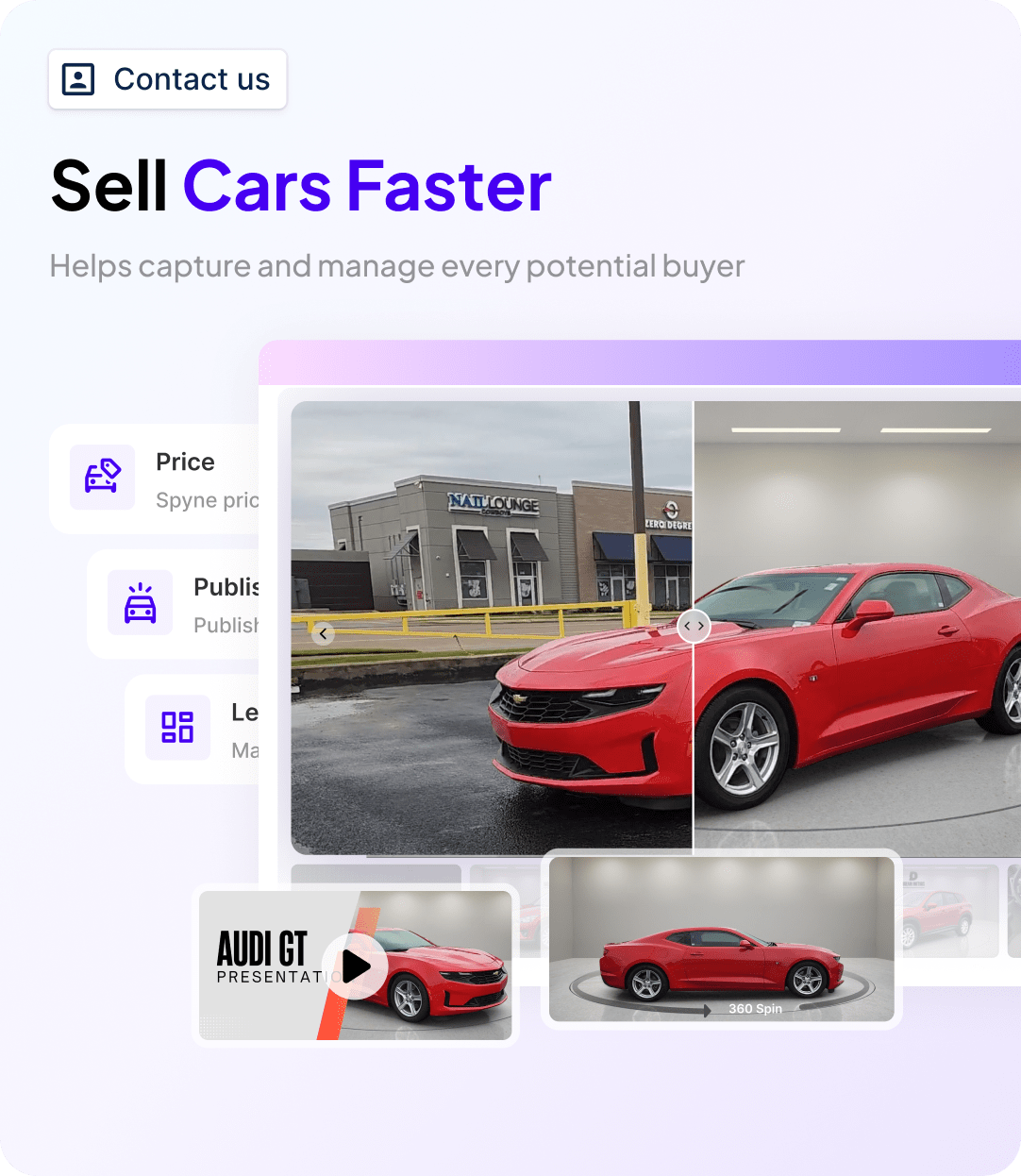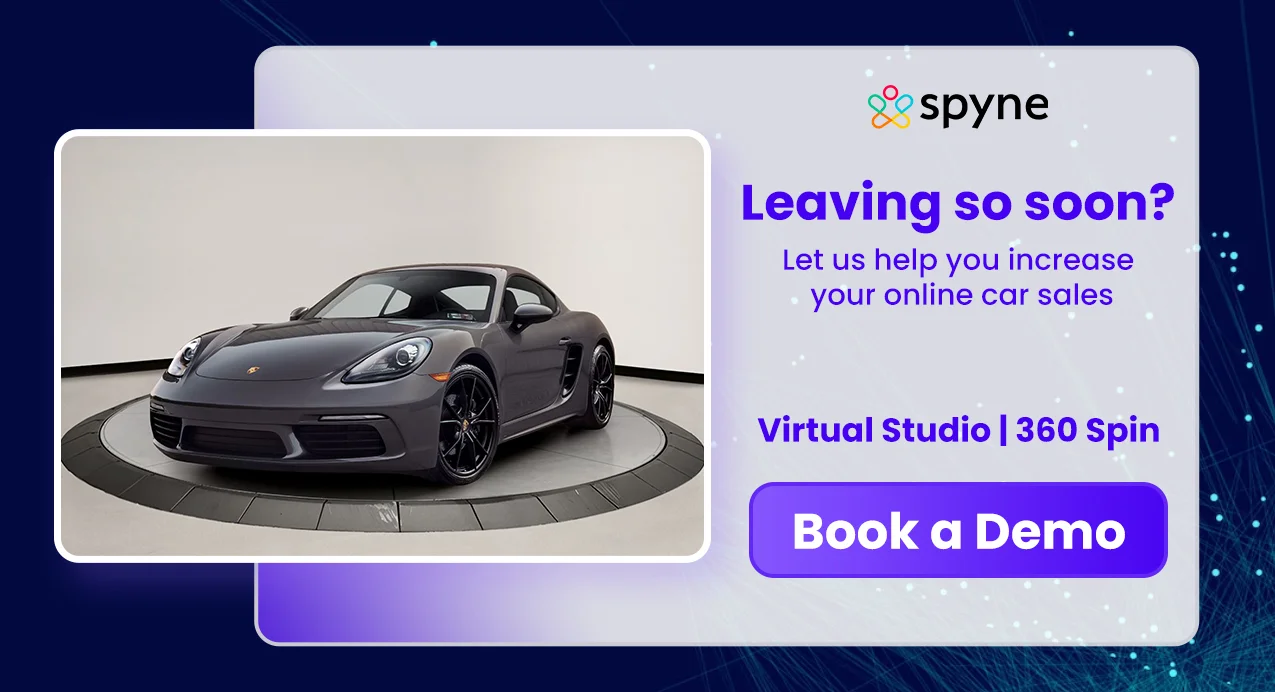Businesses today need quick and easy ways to talk to their customers. People no longer want to wait on phone calls or visit the store just to ask simple questions. That’s where conversational AI and AI chat bots come in. These tools let customers ask questions anytime through an online chat with AI and get fast replies. Whether it’s a free AI chat bot on the website or an AI chatting online feature in your app, it saves time for both the buyer and the dealer. In 2025, using a smart AI conversation tool isn’t just a bonus; it’s a must for better customer service.
What is Conversational AI?
Conversational AI is a type of technology that helps computers talk to people in a natural way. You can chat with it through text or voice using platforms like AI chat online or artificial intelligence chat systems. It understands what you say using tools like machine learning and natural language processing.
Unlike regular chatbots that give fixed replies, conversational AI chatbots can hold real conversations, learn from past chats with AI, and improve over time. It’s used in many places like websites, apps, and online talking AI services to answer questions, help with tasks, or guide users. The goal is to make talking to AI feel simple and more like talking to a person.
How Does Conversational AI Work?
Conversational AI works by using a mix of natural language processing (NLP), machine learning, and sometimes speech recognition to understand and respond to people. These AI conversation systems often appear as AI chat bots or online chat with AI tools. Here’s how it usually works:
- User Input: Someone types a message or speaks to the system. If it’s a voice, it first converts it into text, a common feature in today’s AI bot chatting tools.
- Understanding Intent: The AI reads the message, figures out what the person is trying to say, and pulls out key details.
- Context Management: It remembers what’s been said so far, so the conversation makes sense, something advanced artificial intelligence chat platforms handle well.
- Response Creation: The system creates a reply that sounds natural and helpful, like you’re having a real talk with AI.
- Output: The answer is sent back, either as text or spoken out loud using AI chat GPT capabilities.
As people keep using it, the system learns from those interactions and improves over time, making conversations feel smoother and more human, just like chatting with a friend through deep AI chat.
Top 10 Benefits of Conversational AI in 2025
Conversational AI is changing how businesses talk to their customers. It’s fast, smart, and always available. Here are 10 key benefits you’ll see in 2025:
1. 24/7 Customer Support
Customers can ask questions anytime, day or night. AI chat online is always on, giving quick help even when your team is offline or sleeping.
2. Lower Customer Service Costs
You don’t need a big team for simple questions. A free AI chat bot can handle most of them, saving money on hiring, training, and call center outsourcing costs.
3. Instant Replies
People hate waiting. AI chat bots give fast answers that keep visitors engaged and happy, which helps reduce drop-offs and boosts the overall experience.
4. Personalized Conversations
AI conversation tools remember past chats and customer preferences. They can suggest products, answer based on past behavior, and create a more personal experience over time.
5. Scales Easily During Busy Times
When there’s a rush, like holidays or big launches, artificial intelligence chat online acts as one of the most effective call overflow solutions, handling more conversations without crashing or needing extra staff.
6. Consistent and Accurate Answers
Chat bot GPT systems don’t forget or get tired. They give the same correct information to everyone, which builds trust and reduces confusion.
7. Better Use of Human Staff
Let your team focus on real problems. AI bot chatting takes care of repetitive stuff, so your people can do what they do best.
8. Smarter Business Insights
Each chat is a learning opportunity. Online talking AI and call tracking help you spot trends, understand customer needs, and find new ways to improve your service.
9. More Accessible for Everyone
Whether it’s someone who speaks another language or has a disability, online chat with AI helps more people connect with your business easily.
10. Drives More Sales and Conversions
Talk to AI systems can guide visitors, answer purchase questions, and even recommend products, making it easier to turn interest into action.
Top 10 Real-World Use Cases of Conversational AI
Conversational AI is helping businesses work faster, serve better, and grow smarter. Whether you’re running a store, a clinic, or a service company, here are 10 simple, real-world ways AI-powered chat can improve everyday operations.
1. 24/7 Customer Support
AI chat online gives instant replies to customer questions at any hour. These chat bot AI tools, or an AI phone answering service, help businesses stay available even after closing time, reducing missed opportunities and keeping customers happy without needing extra staff or overtime pay.
2. Easy Appointment Booking
AI chat bots make scheduling fast and stress-free. Customers can book, reschedule, or cancel appointments through online talking AI in seconds, no waiting, no calls. It also helps reduce no-shows with friendly reminders and updates.
3. Better Lead Generation
Instead of long forms, a lead generation chatbot asks quick questions to collect useful information and qualify leads. This means your team only talks to truly interested people, saving time and improving conversion rates.
4. Personalized Product Help
Artificial intelligence chat tools can suggest the right product or service based on what the customer needs or has shown interest in. It’s like having a smart assistant that always knows what to recommend.
5. Follow-Up After Purchase
After a customer buys something, AI conversation tools can continue the chat, sending service reminders, collecting feedback, or offering upgrades. It keeps the brand connected and builds loyalty without manual effort.
6. Quick Product Search
Instead of scrolling or searching, customers can use an AI chat GPT system to ask simple questions like “What’s under $50?” or “Show me popular options,” and get instant, accurate answers that match their needs.
7. Fast Pre-Qualification
Free AI chat bot platforms collect basic customer details and check if someone qualifies for a service, plan, or offer, speeding up the process without confusing paperwork or slow back-and-forth communication.
8. Multilingual Support
AI can chat in multiple languages, helping businesses serve more people comfortably. This breaks language barriers and makes the experience smoother for users from different regions or backgrounds.
9. Proactive Messaging
Talk AI tools don’t just wait; they can start conversations too. Whether it’s sending a reminder, promoting a sale, or updating a delivery, they keep customers informed and engaged automatically.
10. Works with Voice Assistants
AI bot chatting can connect with smart devices like Alexa, Google Assistant, or Siri. Customers can talk to AI using voice commands and get answers instantly, no typing, no searching, just simple and fast service. Whether it’s through a smart speaker or an AI phone call, the goal is seamless support across devices.
Conversational AI vs. Generative AI: What’s the Difference?
Conversational AI and Generative AI are both types of artificial intelligence, but they do very different jobs. One is great at talking with people, the other is great at creating things. Let’s break it down in simple terms.
Conversational AI: Built to Talk and Help People
Conversational AI is designed to understand and respond to human conversations. It powers tools like AI chat bots, virtual assistants, and OpenAI chat bot systems that you see on websites or apps. These tools answer questions, help with bookings, solve small issues, and even guide you through tasks using online chat with AI.
This kind of AI is all about back-and-forth conversations. It listens to what someone types or says and gives a helpful, natural-sounding reply. Whether it’s free AI chat bot software or a smart AI conversation feature, it’s mostly used in customer support or service areas where people expect fast and useful answers.
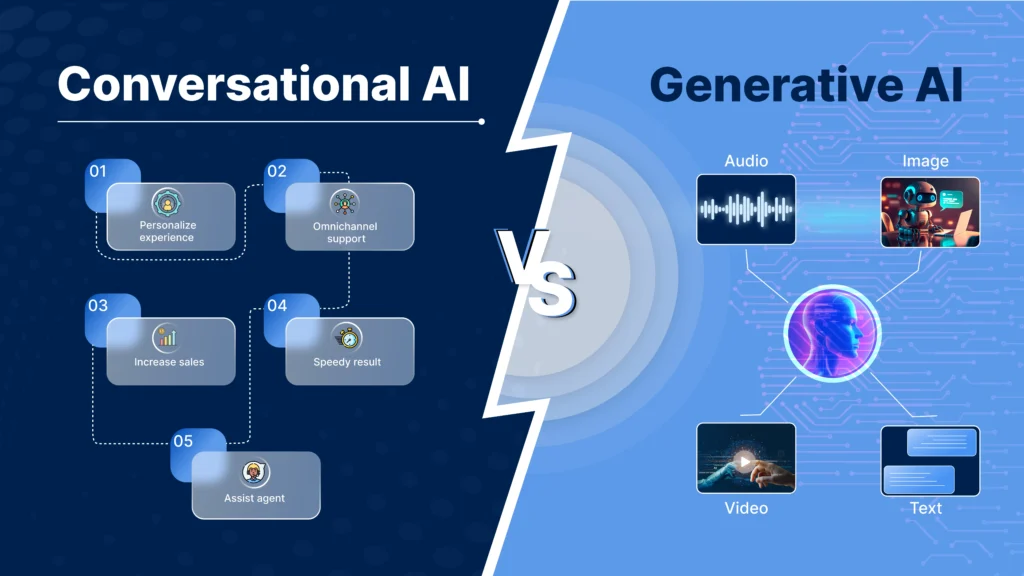
Generative AI: Built to Create New Things
Generative AI is used when you want the AI to create something new. It learns from large amounts of data and then produces content like text, images, videos, designs, or even ideas. Instead of just replying to a question, it can write a blog post, design a poster, or come up with a creative email.
People use AI chat GPT and similar tools for marketing, content creation, brainstorming, product design, and many other creative tasks. It’s like having a smart assistant that can help you write, design, and build from scratch.
What Makes Them Different?
The main difference is their purpose.
- Conversational AI is used for interaction – it listens and responds like a helper. Tools like talk to AI platforms or bot chat AI are built for smooth, helpful conversations.
- Generative AI is used for creation – it builds something new based on input or patterns.
Both are powerful tools, just for different tasks. And today, many conversational AI platforms actually combine the two, so the conversation feels natural and the answers are personalized and creative.
3 Main Components of Conversational AI
Conversational AI works because of a few important parts that help it understand human language and respond like a real person. These components work together to improve customer support and make tasks easier in any industry, whether it’s through AI chat online, online talking AI, or bot chat AI systems.
1. Machine Learning (ML)
Machine Learning helps AI bot chatting tools learn from past conversations. The more data it gets, the smarter it becomes. Over time, it can recognize patterns, understand user behavior, and give better, more personalized replies. For example, it can suggest products or services based on past chats with AI or previous choices.
2. Natural Language Processing (NLP)
NLP is a part of artificial intelligence chat that helps it understand and respond to human language, both written and spoken. It usually works in four steps:
- Input Generation: Users type or speak a message.
- Input Analysis: The AI figures out what the user means. For text, it uses something called NLU (Natural Language Understanding). For voice, it adds voice-to-text conversion (ASR) before understanding the message.
- Dialogue Management: The AI forms a reply using Natural Language Generation (NLG).
- Reinforcement Learning: With every interaction, the system learns how to respond better in the future.
3. Speech Recognition and Text Analysis
This part helps AI conversation systems understand spoken words and written messages. It turns voice into text, breaks it down, and finds meaning. These capabilities are especially useful in smart devices or an auto attendant phone system, where people interact using voice instead of typing.
7 Easy Steps to Build a Conversational AI for Your Business
Creating a conversational AI starts by understanding what your customers need and how they ask for it. Once you know that, you can build an AI chat bot that talks naturally, solves problems, and improves their experience across your website, app, or AI chat online platforms.
1. Start with Frequently Asked Questions (FAQs)
Your free AI chat bot should be built around the questions your customers ask most. This helps your AI receptionist give fast, helpful answers without the need for human support.
Examples:
- Retail: “Do you have this product in stock?” “Can I change my delivery address?”
- Banking: “What’s my account balance?” “How do I apply for a loan?”
- EdTech: “Where’s my course link?” “How do I contact my instructor?”
Start with a basic set of FAQs and keep adding new ones as more chats with AI data come in.
2. Set Goals for Your AI (Define Intents)
Once you have your FAQs, the next step is to define your AI bot chatting goals, also called intents. These are the specific tasks the bot should be able to complete based on what users say.
Examples:
- “I want to reset my password.” – Intent: Account Recovery
- “Show me nearby stores” – Intent: Location Search
- “Book a demo” – Intent: Schedule Appointment
Think of intents as the reason behind the question. They help the AI figure out what action it should take.
3. Define Key Entities (Important Keywords)
Entities are the specific words in a user’s question that give context. These might include names, locations, dates, product types, or other keywords that help the AI give a complete response.
Examples:
- “I want to book a test drive for the Hyundai Tucson at 5 PM in New York.”
– Entities: Car model = Hyundai Tucson, Time = 5 PM, Location = New York - “Schedule an appointment with Dr. Smith on Tuesday.”
– Entities: Doctor = Dr. Smith, Date = Tuesday
Your AI conversation system uses these to personalize answers and take the right actions.
4. Create a Smooth Dialogue Flow
Now that your AI chat GPT system knows what to do and what to listen for, it needs to carry on the conversation like a human. That means asking follow-up questions, confirming answers, and offering help without sounding robotic.
Example:
If a customer says, “I want to return my order,” your AI might respond with:
“Sure! Can you share your order number?” – “Thanks. What item are you returning?” – “Got it. We’ve initiated the return process.”
Planning this step-by-step flow improves the experience and builds trust.
5. Test with Real Conversations
Once your bot is ready, test it with real users. Check if it understands different ways people ask the same question or if it gets stuck. This helps improve the conversational AI platform and the flow.
Tip: Don’t just test perfect sentences. Try slang, typos, or incomplete messages that’s how people actually talk to AI.
6. Keep Updating Your AI Regularly
Your OpenAI chat bot isn’t “set it and forget it.” You need to keep feeding it new products, services, offers, and FAQs. AI chat bots learn from interactions, so frequent updates make them smarter and more helpful.
Example:
If you’re a food delivery app and you add a new city or restaurant, make sure your AI chat free tool can answer: “Do you deliver in Austin now?” or “Is Burger Place open?”
7. Connect AI with Your Other Tools
For your AI to deliver real value, it must integrate with your tools, like CRMs, calendars, VoIP systems, or product databases. That’s when your talk AI assistant becomes not just smart, but also highly useful.
Examples:
- Check inventory status from your store system.
- Pull user info from your CRM to personalize replies.
- Sync with your scheduling tool to book appointments directly.
This makes your AI not just smart, but also useful.
5 Types and Examples of Conversational AI Technologies
Conversational AI comes in different forms and serves multiple purposes across industries. From helping users navigate websites to managing voice-based commands, these technologies are built to simplify everyday tasks, boost engagement, and reduce workload. Whether it’s AI chat online, AI bot chatting, or voice-based assistants, the applications are growing rapidly.
1. AI-Powered Chatbots
These are the most common types of AI chat bots. You’ll find them on websites, apps, and messaging platforms like WhatsApp or Facebook Messenger. They answer questions, guide users through services, and collect feedback through chats with AI.
Example:
An e-commerce site chatbot that helps customers find products, check delivery status, or request returns, without waiting for human support.
2. Voice Assistants
Voice assistants understand spoken commands and respond accordingly. These are often integrated into smartphones, smart speakers, and even appliances. An AI voice agent can help with tasks like playing music, setting reminders, or checking the weather, making talk to AI experiences smoother.
Example:
Apple’s Siri or Amazon Alexa can answer questions, control smart devices, or read your calendar aloud.
3. AI Assistants for Teams
These virtual assistants are built for internal use, supporting employees by automating repetitive tasks. They can schedule meetings, manage emails, or update CRM entries, saving time for more important work. Some platforms even assist with AI cold calling, helping sales teams reach prospects more efficiently. Many businesses now use conversational AI platforms for workplace efficiency.
Example:
A sales rep might use an AI assistant to log call notes or get reminders to follow up with leads.
4. Kiosks & On-Site Bots
Found in retail stores, airports, or hotels, these interactive bot chat AI systems offer self-service experiences. Customers can check in, browse services, or get directions tasks that would traditionally require a receptionist answering phone calls all without needing a staff member.
Example:
A hotel lobby kiosk that helps guests check in, request room service, or find local attractions.
5. Voice Recognition Systems
This technology converts speech into text and helps users interact with systems hands-free. It’s widely used in transcription tools, healthcare dictation apps, and customer service call routing. These systems enhance accessibility and are part of the broader AI chat online ecosystem.
Example:
A doctor using a voice-to-text tool to fill out patient notes quickly after an appointment.
6 Challenges of Conversational AI Technologies in 2025
Conversational AI offers many advantages, but it also comes with its own set of challenges. Whether you’re using it for customer support, lead generation, or task automation, here are some common issues that businesses may face when adopting it in 2025, whether through AI chat bots, online talking AI, or voice-based assistants.
1. Understanding Language Input
AI bot chatting tools can struggle to interpret different accents, slang, or background noise. They may also misread tone, humor, or sarcasm. These issues make it harder for artificial intelligence chat systems to fully grasp what a person is trying to say, which can lead to incorrect or awkward replies.
2. Context Handling and Complex Queries
Many conversational AI platforms lose track of the conversation flow. They may fail to understand follow-up questions or respond poorly to complex or unexpected requests. Even an AI call bot can sometimes struggle with non-linear or emotionally charged queries. That’s why human support is still important for more sensitive or nuanced chats with AI.
3. Data Privacy and Security
Since AI chat online systems deal with a lot of personal data, there’s always a risk of misuse or leaks if not properly secured. That’s why many businesses also implement call monitoring software to ensure quality, compliance, and better security. Companies must follow privacy laws, use encryption, and be transparent about how their free AI chat bot or tools handle user data.
4. User Hesitation and Trust Issues
Not everyone is comfortable using conversation AI tools. Some users hesitate to share information when they know it’s not a real person. To gain trust, businesses should clearly explain how the AI chat bot works and always provide an option to talk to AI or escalate to a human.
5. Bias and Ethical Concerns
If the AI is trained on biased data, it may give unfair or insensitive responses. This raises concerns around ethics, especially when the AI interacts with a wide range of people. Regular checks are needed to ensure fairness and accuracy.
6. Integration with Existing Tools
Setting up conversational AI with current tools like CRMs or help desks can be complex and time-consuming. You also need ongoing updates and testing to keep it accurate and functional as your business and users evolve.
What is the Future of Conversational AI in 2025 and Beyond?
Conversational AI is moving fast, and its future looks exciting. What we’re seeing now, tools like automotive chatbots that answer questions or voice assistants that follow simple commands, is just the beginning. In the next few years, these tools will feel much more natural to talk to, like having a real conversation with a person.
1. More Human-Like Interactions
AI systems will get better at picking up emotions, tone, and context. This means they’ll not only answer your questions but also respond with more sensitivity and understanding. Conversations will flow better, with fewer mistakes and more relevant replies.
2. Smarter Across All Platforms
Whether you’re chatting on a website, mobile app, smart speaker, or even during a phone call, AI will be there, ready to respond. The goal is for these systems to feel the same everywhere, making communication smoother and more consistent.
3. Support for Multiple Languages
Language will no longer be a barrier. Future conversational AI will understand and reply in many different languages, making it easier for people around the world to interact, shop, ask for help, or just get things done.
4. Virtual Assistants with a Face
Imagine talking to a digital assistant that looks and acts like a real person. With advancements in avatars and virtual agents, these tools could offer face-to-face support, answering questions or guiding you through tasks as if you were talking to a human.
5. Hyper-Personalization
The more you use these tools, the better they’ll understand your needs. Future AI will remember your preferences, suggest helpful tips, and even anticipate what you might want, saving you time and making your day easier.
6. From Chatbots to True Assistants
Conversational AI won’t just wait for your questions anymore. It’ll become proactive, like an AI sales assistant, helping you manage tasks, send reminders, solve problems, or recommend useful information. It’s not just about speed; it’s about real value in your everyday life.
How Can Spyne Support Your Conversational AI Requirements?
Spyne’s retail AI provides a comprehensive set of conversational AI tools tailored specifically for automotive dealerships. With sophisticated AI chat bots, call bots, and AI chat online capabilities, it simplifies customer engagement, optimizes lead management, and boosts sales effectiveness through intelligent AI conversation and real-time automation.
1. 24/7 Virtual Assistance + Automated Follow-Ups
Spyne’s AI Concierge ensures your dealership is always available. It handles late-night inquiries, schedules test drives, and acts as an automated lead follow up system for car dealerships, keeping leads warm while your sales team focuses on closing during working hours.
2. Lead Scoring, Tagging & CRM Integration
Spyne auto-tags leads as hot, warm, or cold based on behavior and interest. All insights sync with your automotive CRM, so your team gets a clear, prioritized list of follow-ups without switching tools.
3. AI Call Summaries, Transcripts & Meeting Recaps
Every customer call is auto-transcribed and summarized by Spyne’s AI. Your team gets clean recaps with key points and next steps saving time and making post-call actions quick and consistent.
4. Multilingual, Omnichannel Communication
Spyne’s AI supports conversations across your website, apps, and messaging platforms like WhatsApp in multiple languages. It also powers car dealer live chat, ensuring every customer has a smooth, personalized experience wherever and however they connect.
5. Personalized AI Chatbots Built for Dealerships
Spyne’s chatbots know your inventory, pricing, and services. They personalize recommendations, guide users through the buying journey, and deliver real-time answers that move customers closer to conversion.
6. Human-Like Conversations Using NLP, ML & Dialogue Management
Powered by NLP and machine learning, Spyne’s AI responds naturally, understands context, and handles multi-turn conversations so customers feel like they’re talking to a real sales rep, not a bot.
7. Contextual Understanding + Intent Recognition
Spyne understands customer intent even with short or vague messages and remembers past interactions. It keeps the conversation flowing intelligently across sessions, building trust with every touchpoint.
8. AI-Powered FAQ Automation + Conversational Search
Spyne converts your dealership’s FAQs into a smart, searchable experience. Customers can ask questions naturally and get instant, accurate responses without waiting for a human agent.
9. Voice Recognition + Input Analysis
Customers can speak or type Spyne’s AI handles both. It accurately captures voice commands, corrects typos, and understands informal inputs, making every conversation smooth and user-friendly.
10. Backend Integration for Real-Time Inventory & Pricing
Spyne connects with your dealership systems to fetch live vehicle data. Customers get accurate availability, prices, and promotions in real time removing friction and boosting purchase confidence.
11. Enterprise-Grade Security + Performance Monitoring
Spyne protects your data with enterprise-level encryption and privacy controls. You also get real-time dashboards to monitor performance, engagement, and response quality across all AI interactions.
12. Increased Sales with Cost-Efficient
By automating common conversations, Spyne reduces support costs and shortens the sales cycle. Think of it as adding AI employees to your team scaling operations without increasing headcount.
Conclusion
A better customer experience leads to more sales, and Spyne helps you do just that. Our conversational AI tools are made for car dealerships, helping you talk to leads in real time, answer questions, and book test drives 24/7. Whether you run a small used car lot or a large dealership, Spyne gives you the tools to close deals faster. Ready to take your dealership to the next level? Book a free demo now and see the difference Spyne can make.

